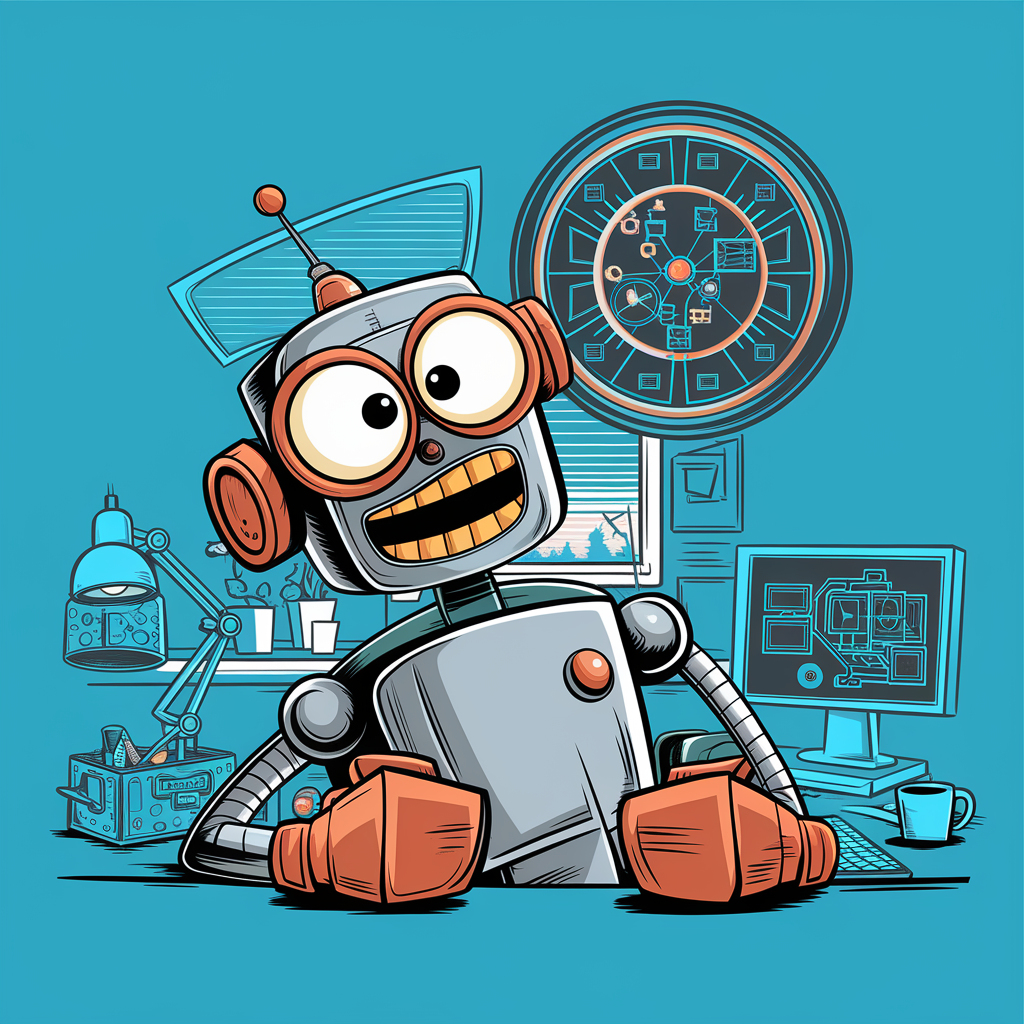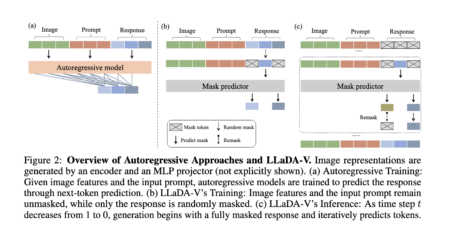

Agentic AI stands at the intersection of autonomy, intelligence, and adaptability, offering solutions that can sense, reason, and act in real or virtual environments with minimal human oversight. At its core, an “agentic” system perceives environmental cues, processes them in light of existing knowledge, arrives at decisions through reasoning, and ultimately acts on those decisions—all within an iterative feedback loop. Such systems often mimic, in part, the cycle of perception and action found in biological organisms, though scaled up by computational power. Understanding this autonomy requires unpacking the various components that enable such systems to function effectively and responsibly. The Perception/Observation Layer and the Knowledge Representation & Memory systems are chief among these foundational elements.
In this five-part article series, we will delve into the nuances of Agentic AI to better understand the concepts involved. This inaugural article provides a high-level introduction to Agentic AI, emphasizing the role of perception and knowledge as the bedrock of decision-making.
The Emergence of Agentic AI
To emphasize the gravity of the topic, Jensen Huang, CEO of Nvidia, declared at CES 2025 that AI agents represent a multi-trillion-dollar opportunity.
Agentic AI is born out of a need for software and robotic systems that can operate with independence and responsiveness. Traditional programming, which is rules-driven and typically brittle, struggles to cope with the complexity and variability of real-world conditions. Contrastingly, agentic systems incorporate machine learning (ML) and artificial intelligence (AI) methodologies that allow them to adapt, learn from experience, and navigate uncertain environments. This paradigm shift is particularly visible in applications such as:
- Autonomous Vehicles – Self-driving cars and drones rely on perception modules (sensors, cameras) fused with advanced algorithms to operate in dynamic traffic and weather conditions.
- Intelligent Virtual Assistants – Chatbots, voice assistants, and specialized customer service agents continually refine their responses through user interactions and iterative learning approaches.
- Industrial Robotics – Robot arms on factory floors coordinate with sensor networks to assemble products more efficiently, diagnosing faults and adjusting their operation in real time.
- Healthcare Diagnostics – Clinical decision support tools analyze medical images, patient histories, and real-time vitals to offer diagnoses or detect anomalies.
The consistent theme in these use cases is an AI-driven entity that moves beyond passive data analysis to dynamically and continuously sense, think, and act. Yet, before a system can take meaningful action, it must capture and interpret the data from which it forms its understanding. That is where the Perception/Observation Layer and Knowledge Representation frameworks come into play.
The Perception/Observation Layer: Gateway to the World
An agent’s ability to sense its environment accurately underpins every subsequent step in the decision chain. The Perception/Observation Layer transforms raw data from cameras, microphones, LIDAR sensors, text interfaces, or any other input modality into a form the AI can process. This transformation often involves tokenization, embedding, image preprocessing, or sensor fusion, all designed to make sense of diverse inputs.
1. Multi-Modal Data Capture
Modern AI agents may need to concurrently handle images, text, audio, and scalar sensor data. For instance, a home assistant might process voice commands (audio) while scanning for occupant presence via infrared sensors (scalar data). Meanwhile, an autonomous drone with a camera must process video streams (images) and telemetry data (GPS coordinates, accelerometer readings) to navigate. Successfully integrating these multiple sources requires robust pipelines.
- Computer Vision (CV): Using libraries such as OpenCV, agents can detect edges, shapes, or motion within a scene, enabling higher-level tasks like object recognition or scene segmentation. Preprocessing images might involve resizing, color normalization, or filtering out noise.
- Natural Language Processing (NLP): Text data and voice inputs are transformed into tokens using tools like spaCy. These tokens can then be mapped to semantic embeddings or used directly by transformer-based models to interpret intent and context.
- Sensor Data: In robotic settings, analog sensor readings (e.g., temperature and pressure) might need calibration or filtering. Tools such as Kalman filters can mitigate noise by probabilistically inferring the system’s true state from imperfect readings.
2. Feature Extraction and Embedding
Raw data, whether text or images, must be converted into a structured numerical representation, often referred to as a feature vector or embedding. These embeddings serve as the “language” by which subsequent modules (like reasoning or decision-making) interpret the environment.
- Tokenization and Word Embeddings: In NLP, tokenization divides text into meaningful units (words, subwords). Libraries like spaCy can handle complex tasks such as named entity recognition or part-of-speech tagging. Embeddings like word2vec, GloVe, or contextual embeddings from large language models (e.g., GPT-4) transform the text into vectors that capture semantic relationships.
- Image Embeddings: Convolutional neural networks (CNNs) or vision transformers can transform images into dense vector embedding. This vector captures high-level features such as object presence or image style. The agent can then compare images or detect anomalies by comparing these vectors.
- Sensor Fusion: When dealing with multiple sensory inputs, an agent might rely on sensor fusion algorithms. This process merges data into a single coherent representation. For example, combining LIDAR depth maps with camera-based object detection yields a more complete “view” of the agent’s surroundings.
3. Domain-Specific Context
Effective perception often requires domain-specific knowledge. For example, a system analyzing medical scans must know about anatomical structures, while a self-driving car must handle lane detection and traffic sign recognition. Specialized libraries and pre-trained models accelerate development, ensuring each agent remains context-aware. This domain knowledge feeds into the agent’s memory store, ensuring that each new piece of data is interpreted in light of relevant domain constraints.
Knowledge Representation & Memory: The Agent’s Internal Repository
While perception provides the raw input, knowledge representation, and memory form the backbone that allows an agent to leverage experience and stored information for present tasks. Dividing short-term context (working memory) into long-term data (knowledge bases or vector embeddings) is a common design in AI architectures, mirroring concepts from cognitive psychology.
1. Short-Term Context (Working Memory)
Working memory holds the immediate context the agent requires to perform a given task. In many advanced AI systems—such as those leveraging large language models—this manifests as a context window (e.g., a few thousand tokens) that the system can “attend to” at any one time. Alternatively, short-term memory might include recent states, actions, and rewards in reinforcement learning scenarios. This memory is typically ephemeral and continuously updated.
- Role in Decision-Making: Working memory is crucial because it supplies the system with immediate, relevant context. For example, suppose an AI-based customer service agent handles a complex conversation. To respond accurately, it must retain user preferences, prior questions, and appropriate policy constraints within its active memory.
- Implementation Approaches: Short-term context can be stored in ephemeral data structures in memory or within specialized session-based storage systems. The critical factor is speed—these data must be accessible within milliseconds to inform real-time decision-making.
2. Long-Term Knowledge Bases
Beyond the ephemeral short-term context, an agent may need to consult a broader repository of information that it has accumulated or been provided:
- Databases and Vector Embeddings: Structured knowledge can reside in relational databases or knowledge graphs. Vector databases like Faiss or Milvus increasingly store high-dimensional embeddings, enabling fast similarity searches across potentially billions of entries. This is crucial for tasks like semantic retrieval, where an agent may look for relevant documents or patterns similar to the current situation.
- Semantic Knowledge Graphs: Knowledge graphs store entities, relationships, and attributes in a graph data structure. This approach enables agents to perform complex queries and infer connections between pieces of information that may not be explicitly stated. Semantic knowledge graphs also incorporate ontologies that define domain-specific concepts, supporting better contextual understanding.
- Incremental Updates: In truly autonomous systems, knowledge representation must be mutable. As new data arrives, an agent must adjust or augment its knowledge base. For instance, a warehouse robot might learn that a particular corridor is often blocked and update its path-planning preferences accordingly. A virtual assistant might also learn new user preferences over time.
3. Ensuring Context Awareness
A critical function of knowledge representation and memory is maintaining context awareness. Whether a chatbot adjusts tone based on user sentiment or an industrial robot recalls a specific calibration routine for a new part, memory elements must be seamlessly integrated into the perception pipeline. Domain-specific triggers or “attention mechanisms” enable agents to look up relevant concepts or historical data when needed.
The Synergy Between Perception and Knowledge
These two layers, Perception/Observation, and Knowledge Representation & Memory, are deeply intertwined. Without accurate perception, no amount of stored knowledge can compensate for incomplete or erroneous data about the environment. Conversely, an agent with poor knowledge representation will struggle to interpret and use its perceptual data, leading to suboptimal or even dangerous decisions.
- Feedback Loops: The agent’s knowledge base may guide the perception process. For example, a self-driving car might focus on detecting traffic lights and pedestrians if its knowledge base suggests these are the top priorities in urban environments. Conversely, anomalies detected in the perception layer may trigger a knowledge base update (e.g., new categories for unseen objects).
- Data Efficiency: Embedding-based retrieval systems allow agents to quickly fetch relevant information from vast knowledge repositories without combing through every record. This ensures real-time or near-real-time responses, a critical feature in domains like robotics or interactive services.
- Contextual Interpretation: Knowledge representation informs how raw data is labeled or interpreted. For example, an image of a factory floor might be labeled “machine X requires maintenance” instead of just “red blinking light.” The domain context transforms raw perception into actionable insights.
Conclusion
Agentic AI is transforming how systems sense, reason, and act. By leveraging a robust Perception/Observation Layer and a thoughtfully constructed Knowledge Representation and memory framework, these agentic systems can feel the world, interpret it, and meaningfully remember crucial information for the future. This synergy forms the bedrock for higher-level decision-making, where reward-based or logic-driven processes can guide the agent toward optimal actions.
However, perception and knowledge representation are only the initial parts. In the subsequent articles of this series, the spotlight will shift to reasoning and decision-making, action and actuation, communication and coordination, orchestration and workflow management, monitoring and logging, security and privacy, and the central role of human oversight and ethical safeguards. Each component augments the agent’s capacity to function as an independent entity that can operate ethically, transparently, and effectively in real-world contexts.
Sources
- https://www.ces.tech/videos/2025/january/nvidia-keynote/
- https://arxiv.org/abs/1301.3781
- https://blogs.nvidia.com/blog/what-is-agentic-ai/
- https://arxiv.org/pdf/2407.01502
- https://www.medrxiv.org/content/10.1101/2024.11.15.24317267v1.full.pdf
- https://hbr.org/2024/12/what-is-agentic-ai-and-how-will-it-change-work
- https://spacy.io/
- https://opencv.org/
- https://github.com/facebookresearch/faiss
- https://milvus.io/
- https://ieeexplore.ieee.org/stamp/stamp.jsp
- http://www.cs.unc.edu/~welch/kalman/
- https://openai.com/research/gpt-4
- https://nlp.stanford.edu/pubs/glove.pdf
Also, don’t forget to follow us on Twitter and join our Telegram Channel and LinkedIn Group. Don’t Forget to join our 70k+ ML SubReddit.
 Meet IntellAgent: An Open-Source Multi-Agent Framework to Evaluate Complex Conversational AI System (Promoted)
Meet IntellAgent: An Open-Source Multi-Agent Framework to Evaluate Complex Conversational AI System (Promoted)
The post Agentic AI: The Foundations Based on Perception Layer, Knowledge Representation and Memory Systems appeared first on MarkTechPost.
Source: Read MoreÂ





